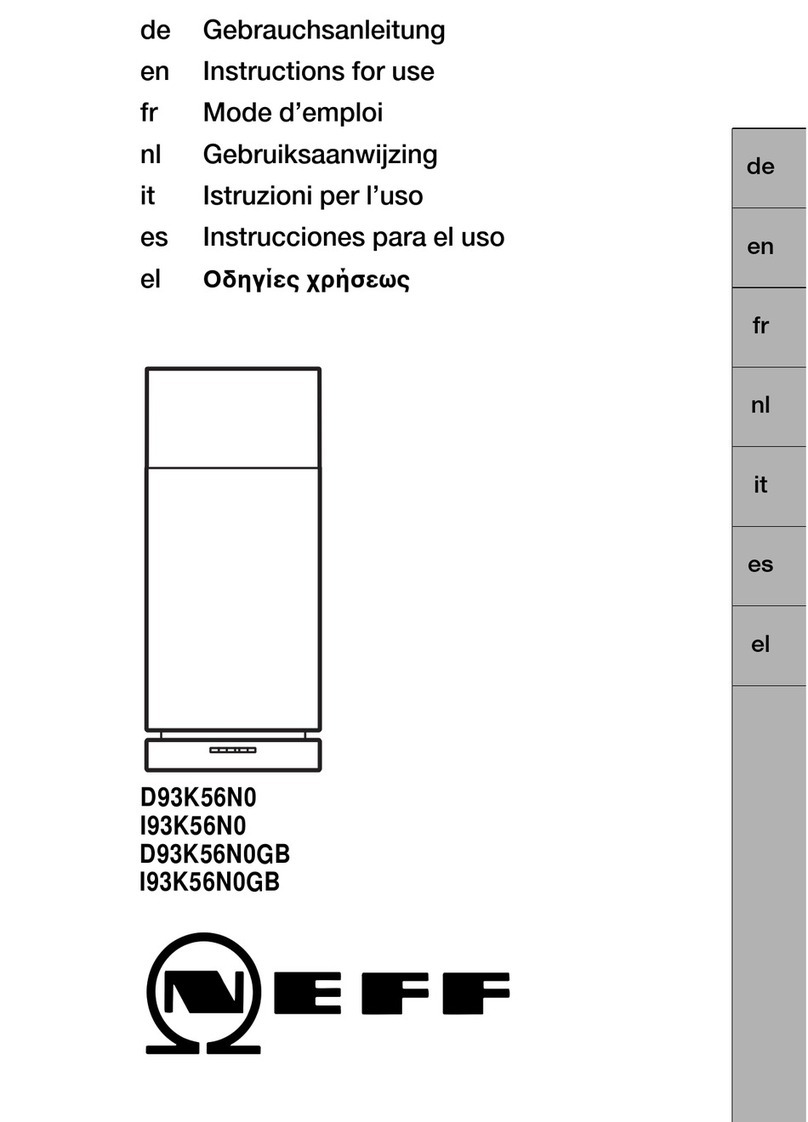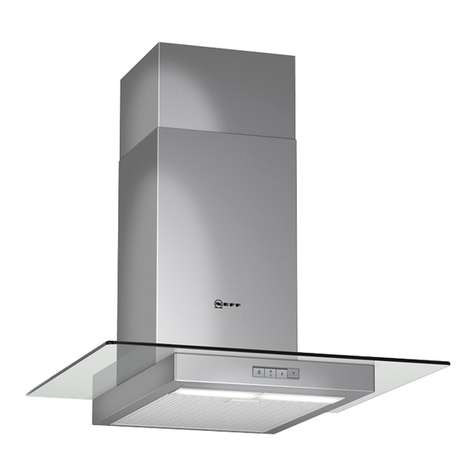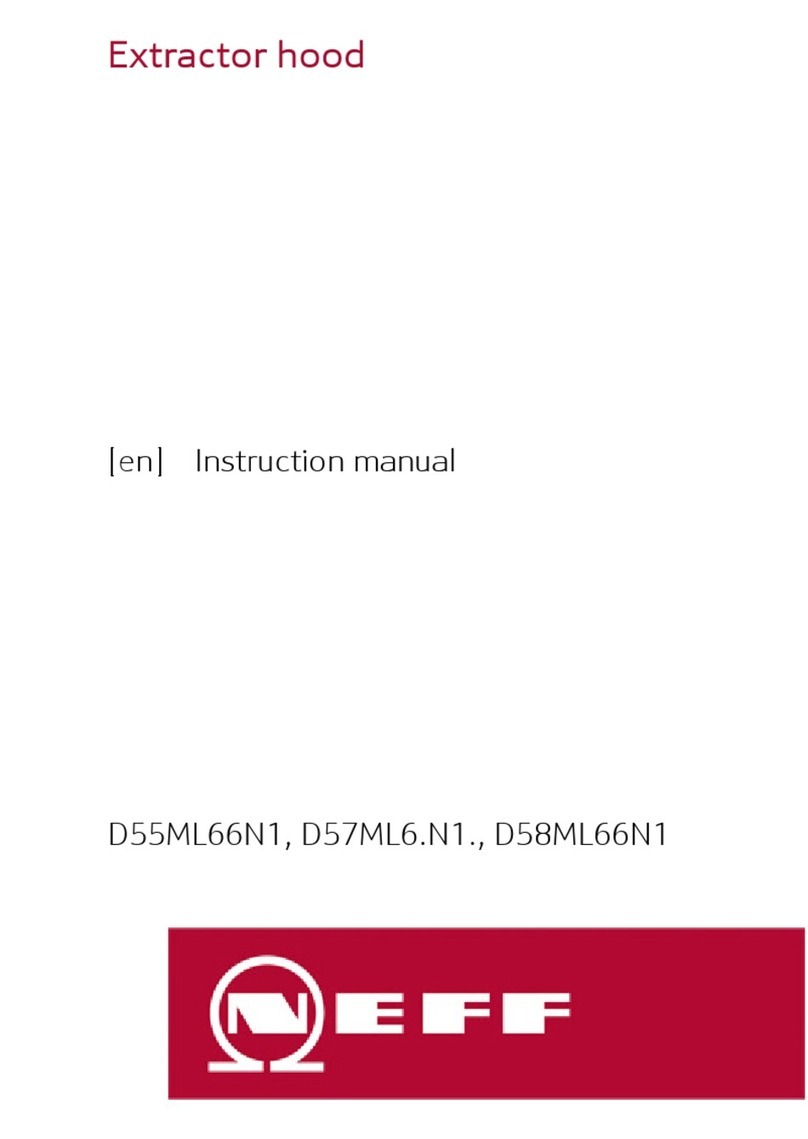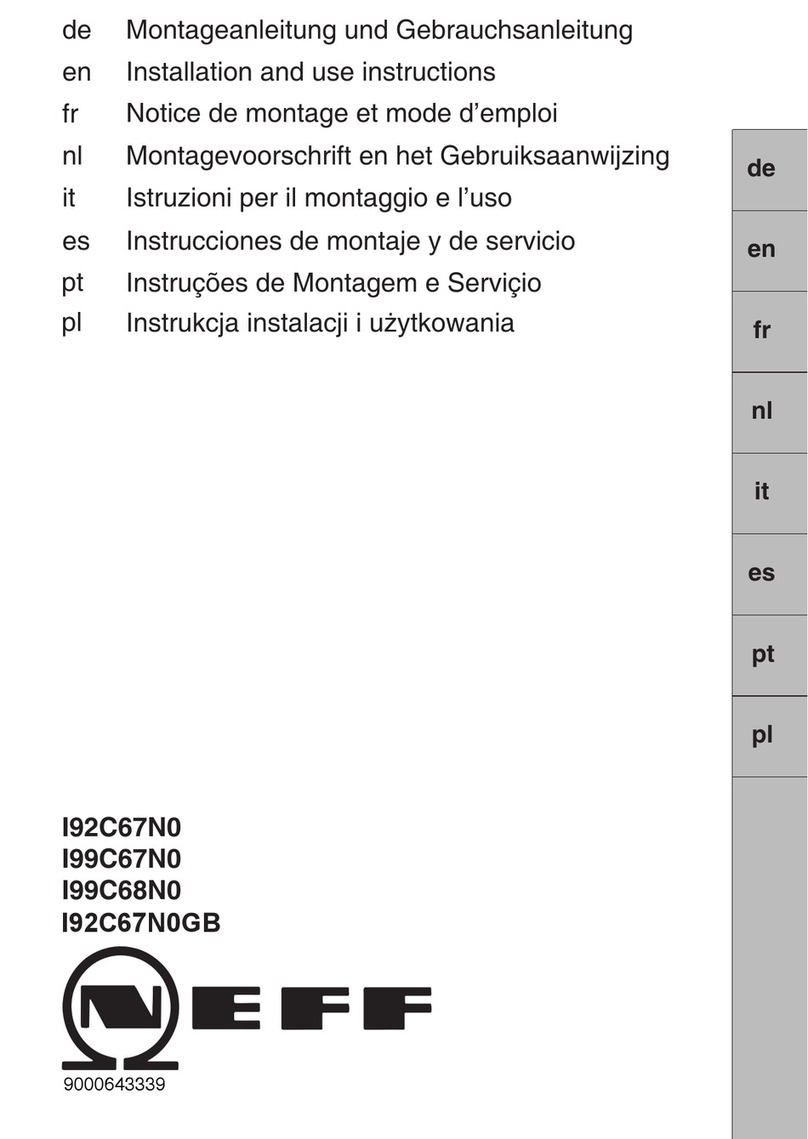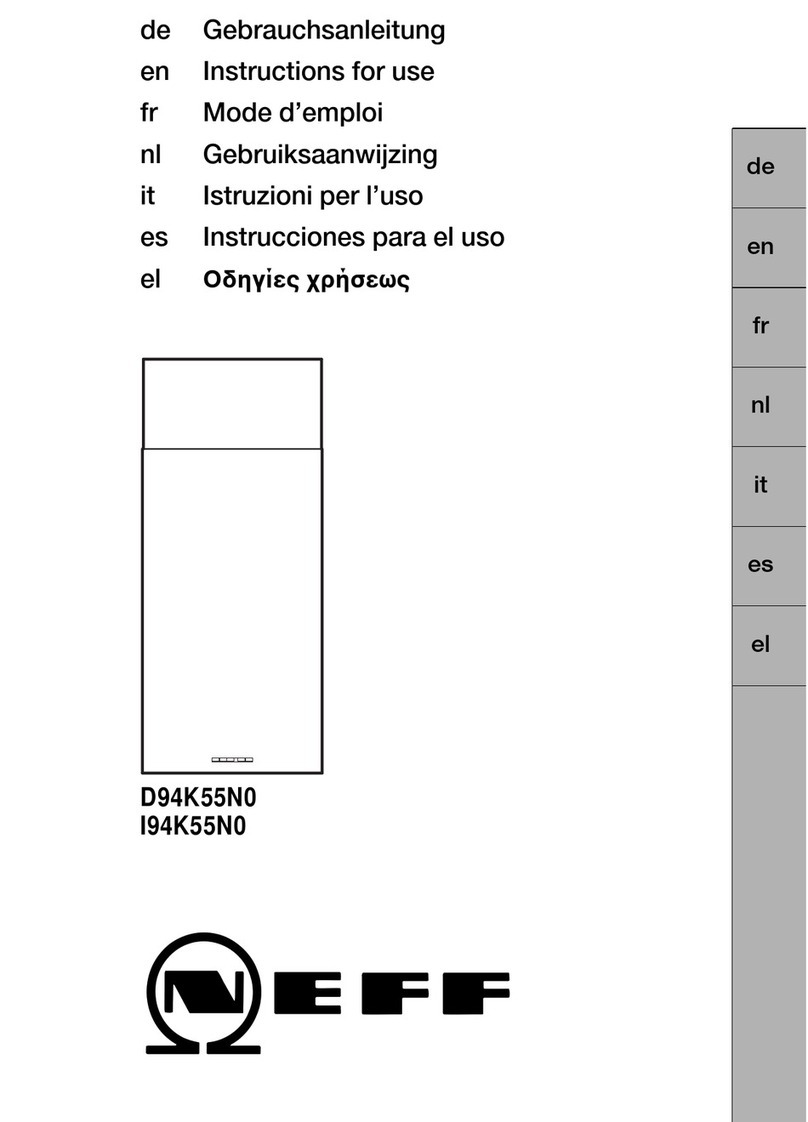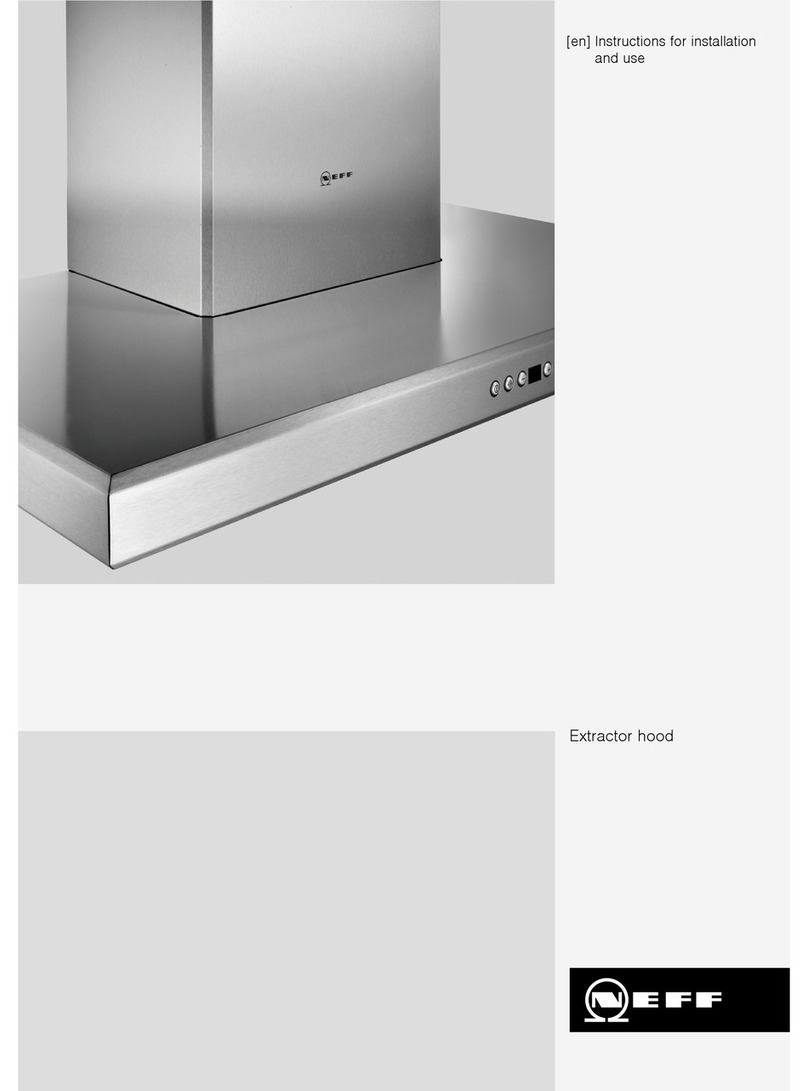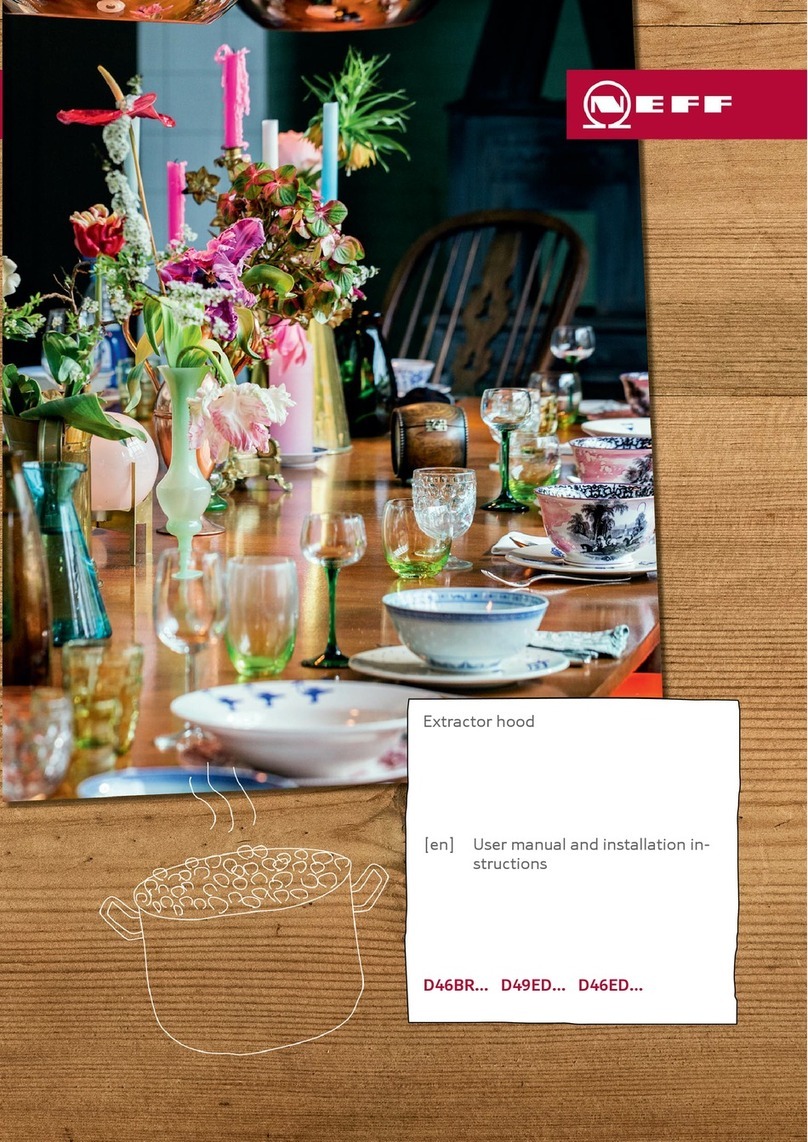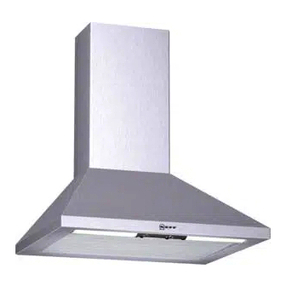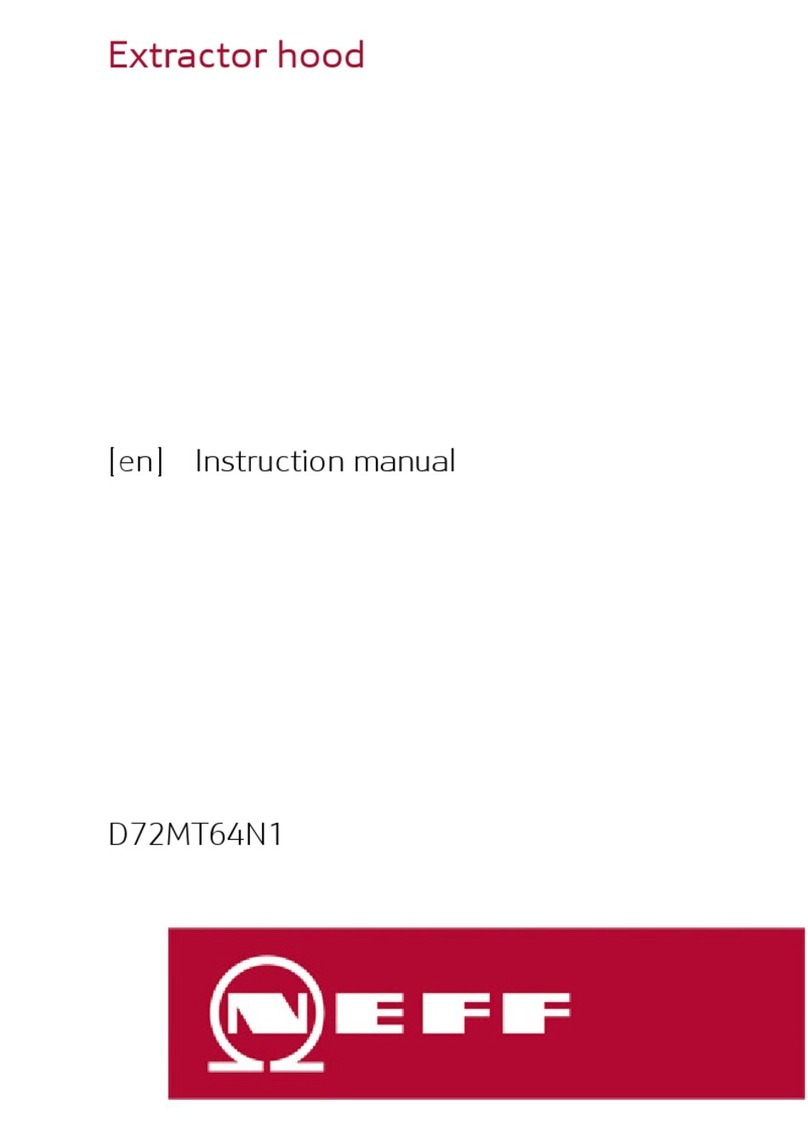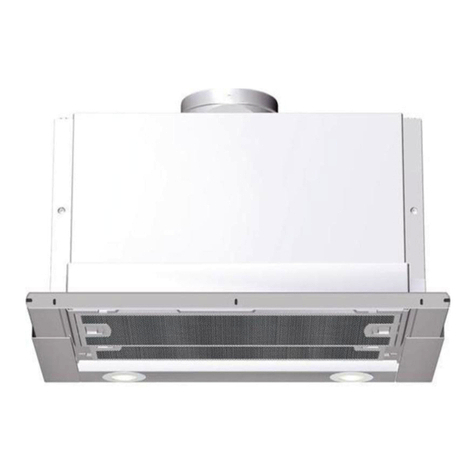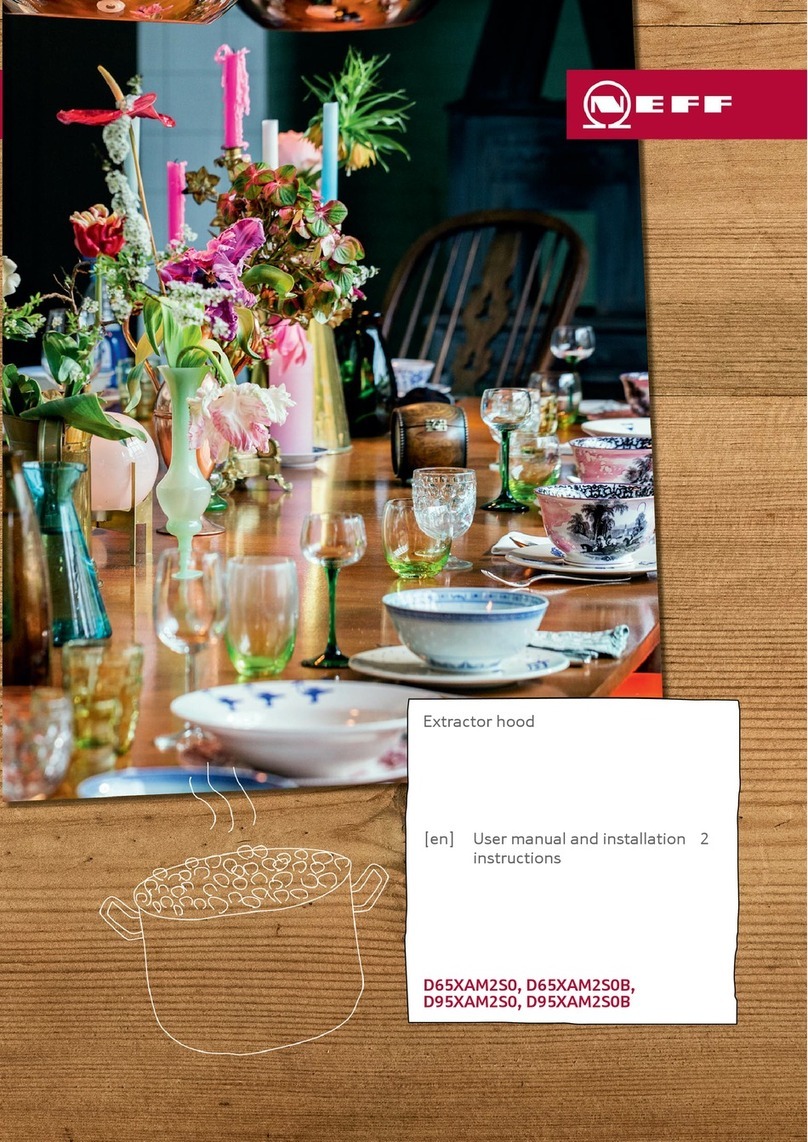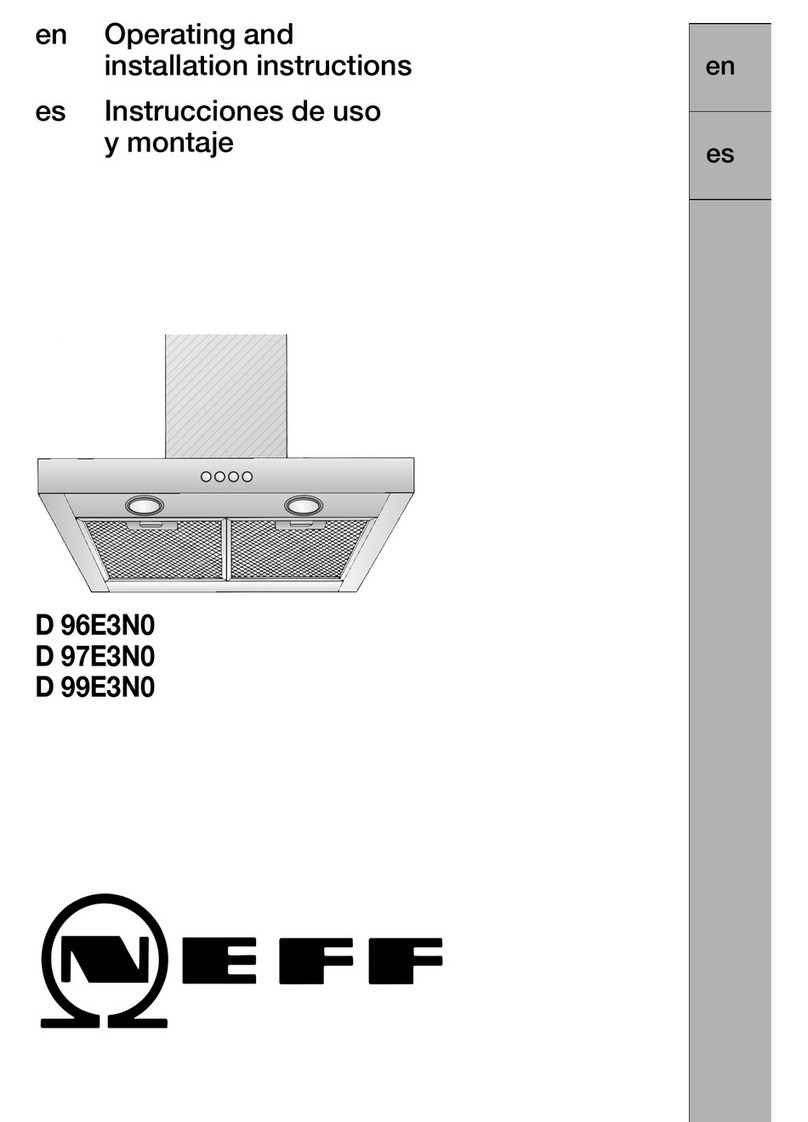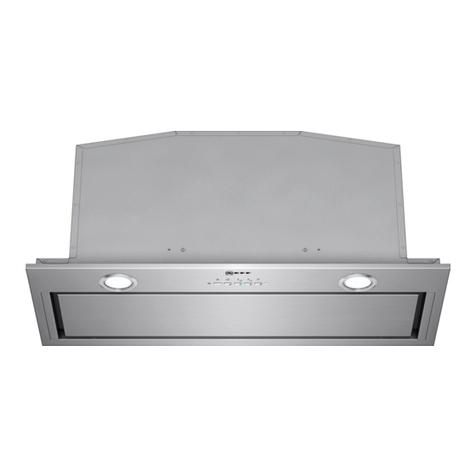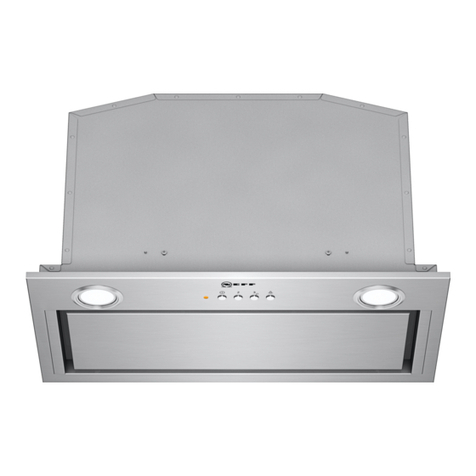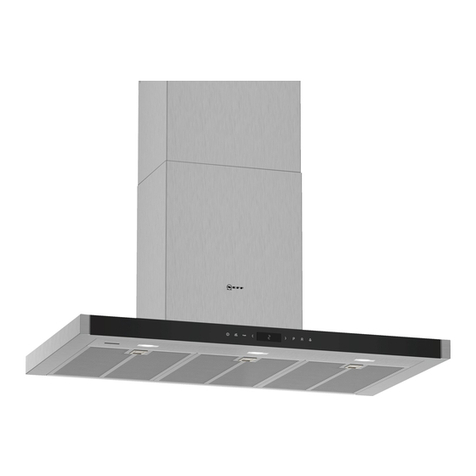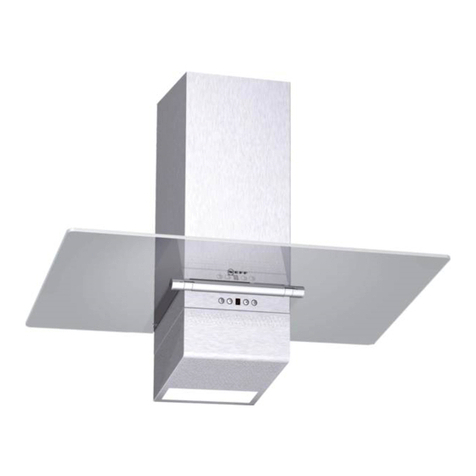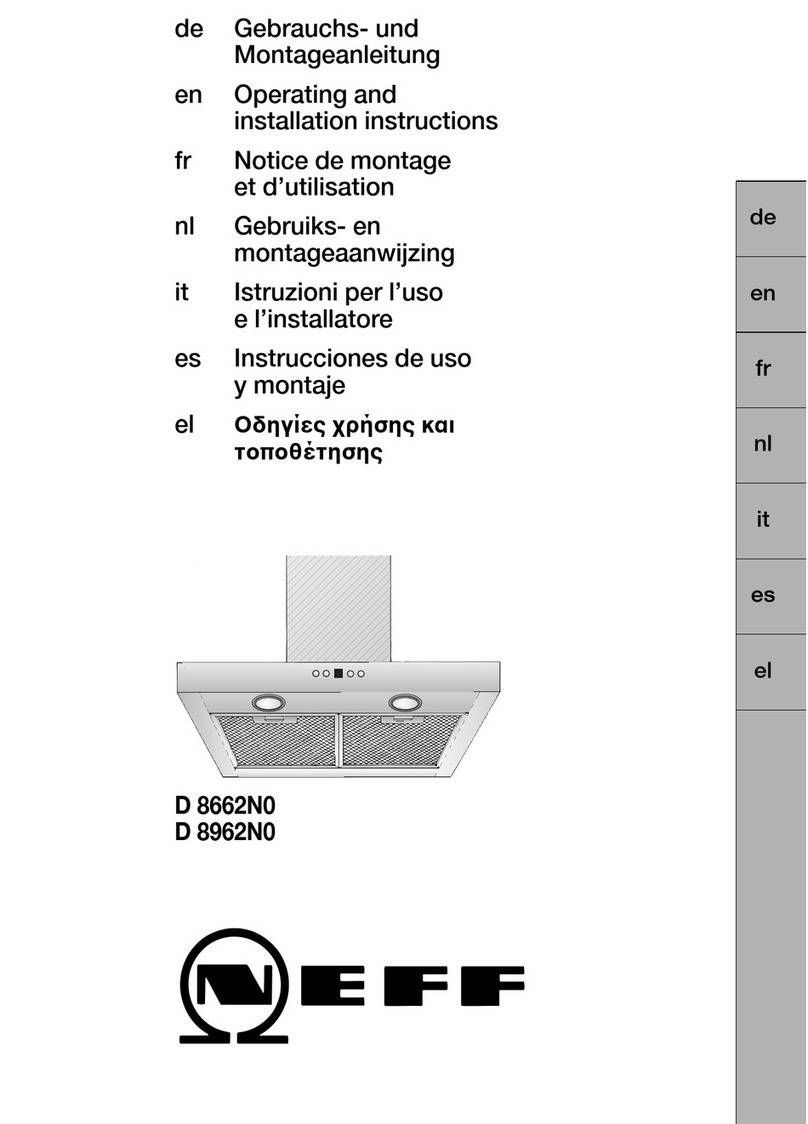10
Cleaning and care
LOOKING AFTER THE APPLIANCE
Suitable cleaning agents and care products
for your appliance can be purchased via the
Hotline or from the Online Shop (see cover
page).
Appliance surfaces
NOTE: Observe the warranty regulations in the
enclosed service booklet.
The appliance surfaces and controls are
scratch-sensitive. Therefore observe the
following cleaning instructions:
– Avoid cleaning the extractor hood with dry
cloths, abrasive sponges, scouring agents,
cleaning agents containing sand, soda, acid,
chlorine or any other aggressive substances.
– Clean the appliance surfaces and controls
with a soft, damp cloth, washing-up liquid
or a mild window cleaner only.
– Do not scrape o dried dirt, but moisten with
a damp cloth.
– Clean carefully in the area of the controls to
avoid liquid from getting into the
electronics.
NOTE: Clean the stainless steel surfaces in the
direction of the ground surface only!
Do not use stainless steel cleaner for the
control buttons!
Metal-mesh grease lters
The metal-mesh grease lters absorb the
grease particles from the kitchen fumes.
The lter mats consist of re-proof metal.
RISK OF FIRE
As the lters become more saturated with
greasy residue, the ammability increases. The
function of the extractor hood may also be
impaired.
The risk of re is prevented by cleaning the
metal-mesh grease lters in good time.
When cleaning the grease lters, also
remove grease deposits from the accessible
parts of the housing with a damp cloth.
Cleaning the metal-mesh grease lters ...
Under normal operation (daily 1 to 2 hours),
the metal-mesh grease lters must be cleaned
1x month.
... in the dishwasher
The metal-mesh grease lters can be
cleaned in the dishwasher. Slight
discolouration may occur but this will not
aect the function of the grease lters.
The lters must be placed loosely in the
dishwasher. They must not be wedged in.
NOTE: Do not clean heavily saturated metal-
mesh grease lters together with utensils.
... by hand
When cleaning by hand, soak the grease
lters in a hot detergent solution, brush o the
dirt, rinse thoroughly and leave to dry.
Do not use any aggressive, acidic or alkaline
cleaning agents.
If dirt is particularly stubborn, we
recommend using a special grease solvent
spray. This can be ordered via the Online Shop.
